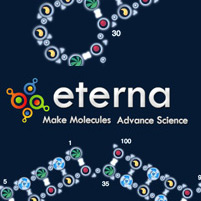EteRNA

More than 130,000 volunteers are contributing to RNA molecule research by playing EteRNA, an online game from Carnegie Mellon and Stanford University.
Their design work, which is taking place in a virtual global laboratory, is superior to what is produced by the newest and fastest computer tools available.
EteRNA is crowdsourcing the design of RNA molecules and, in the process, gathering the best design rules and practices generated by the online community. Working through an online interface and receiving feedback from lab experiments, the community has produced designs for RNA molecules that are consistently more successful than those generated by the best computerized design algorithms.
"The quality of the designs produced by the online EteRNA community is just amazing and far beyond what any of us anticipated when we began this project three years ago," said Adrien Treiulle, an assistant professor of computer science and robotics at Carnegie Mellon, who leads the project with Rhiju Das, an assistant professor of biochemistry at Stanford, and Jeehyung Lee, a Ph.D. student in computer science at Carnegie Mellon.
Using machine learning principles, researchers combined design principles from the community into their own automated design algorithm, EteRNABot, which also bested prior design algorithms. Though this improved computer design tool is faster than humans, the designs it generates still don't match the quality of those of the online community.
The research was published Jan. 28 in the Proceedings of the National Academy of Sciences Online Early Edition.
"This wouldn't be possible if EteRNA members were just spitting out designs using online simulation tools," Treuille said. "By actually synthesizing the most promising designs in Das' lab at Stanford, we're giving our community feedback about what works and doesn't work in the physical world. And, as a result, these non-experts are providing us insight into RNA design that is significantly advancing the science."
RNA, or ribonucleic acid, is one of the three macromolecules essential for life, along with DNA and proteins. Long recognized as a messenger for genetic information, RNA also may play a much broader role as a regulator of cells. Understanding RNA design could be useful for treating or controlling diseases such as HIV, for creating RNA-based sensors or even for building computers out of RNA.
The project is now looking at expanding its design regimen to include three-dimensional designs. They also are developing a template that researchers in other fields can use to turn scientific projects into online challenges.
Related Links: Read press release | Eterna | New York Times article | Science
